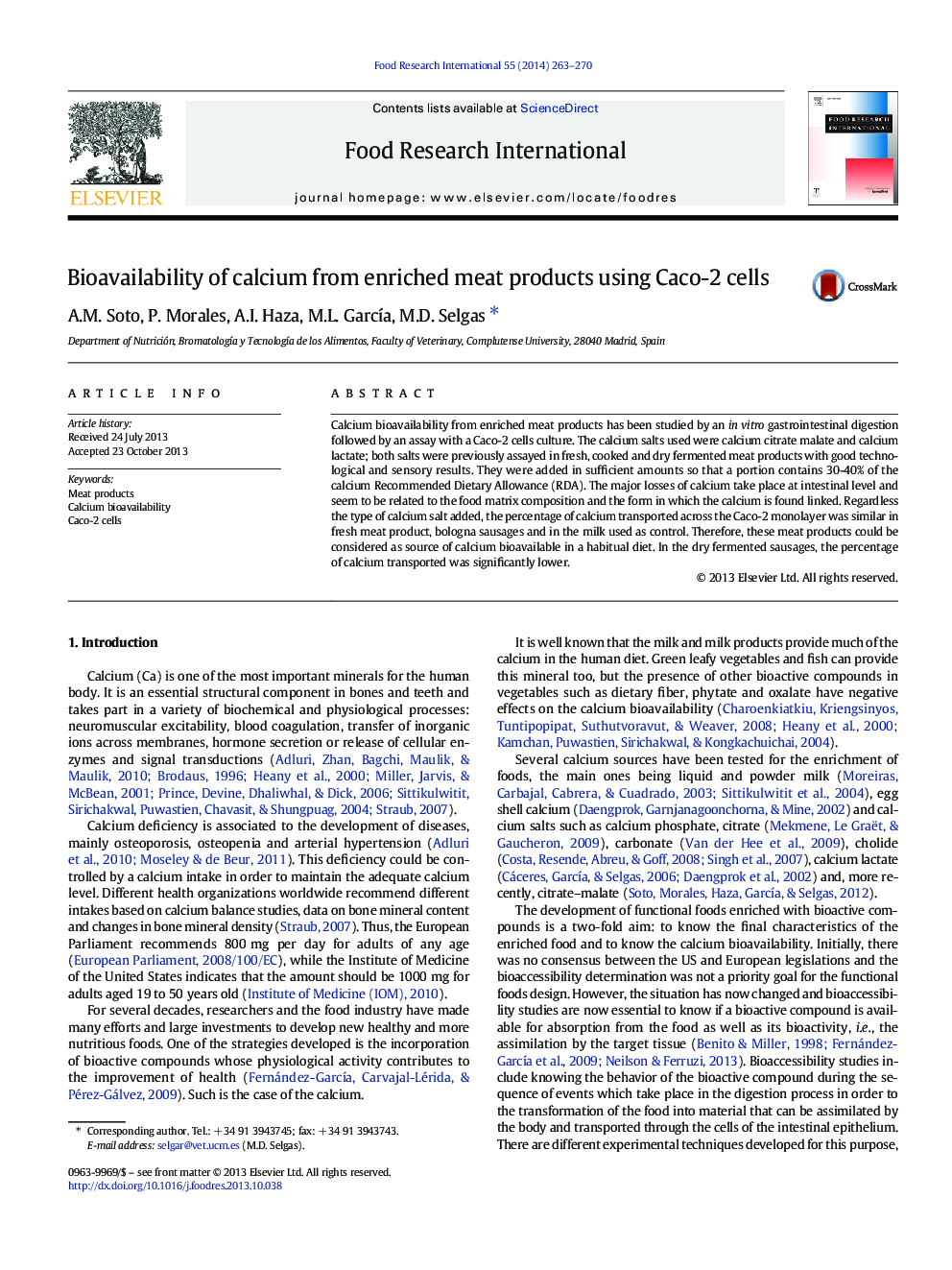| Article ID | Journal | Published Year | Pages | File Type |
|---|---|---|---|---|
| 6397902 | Food Research International | 2014 | 8 Pages |
â¢Calcium citrate malate and lactate were used for the enrichment of meat products.â¢Calcium bioavailability from enriched meat products were studied with Caco-2 cells.â¢Calcium bioavailability was similar in both calcium salts assayed.â¢From hamburgers & bologna sausages, calcium bioavailable was similar to control milk.â¢Enriched hamburgers & bologna sausages could be considered as source of calcium.
Calcium bioavailability from enriched meat products has been studied by an in vitro gastrointestinal digestion followed by an assay with a Caco-2 cells culture. The calcium salts used were calcium citrate malate and calcium lactate; both salts were previously assayed in fresh, cooked and dry fermented meat products with good technological and sensory results. They were added in sufficient amounts so that a portion contains 30-40% of the calcium Recommended Dietary Allowance (RDA). The major losses of calcium take place at intestinal level and seem to be related to the food matrix composition and the form in which the calcium is found linked. Regardless the type of calcium salt added, the percentage of calcium transported across the Caco-2 monolayer was similar in fresh meat product, bologna sausages and in the milk used as control. Therefore, these meat products could be considered as source of calcium bioavailable in a habitual diet. In the dry fermented sausages, the percentage of calcium transported was significantly lower.
